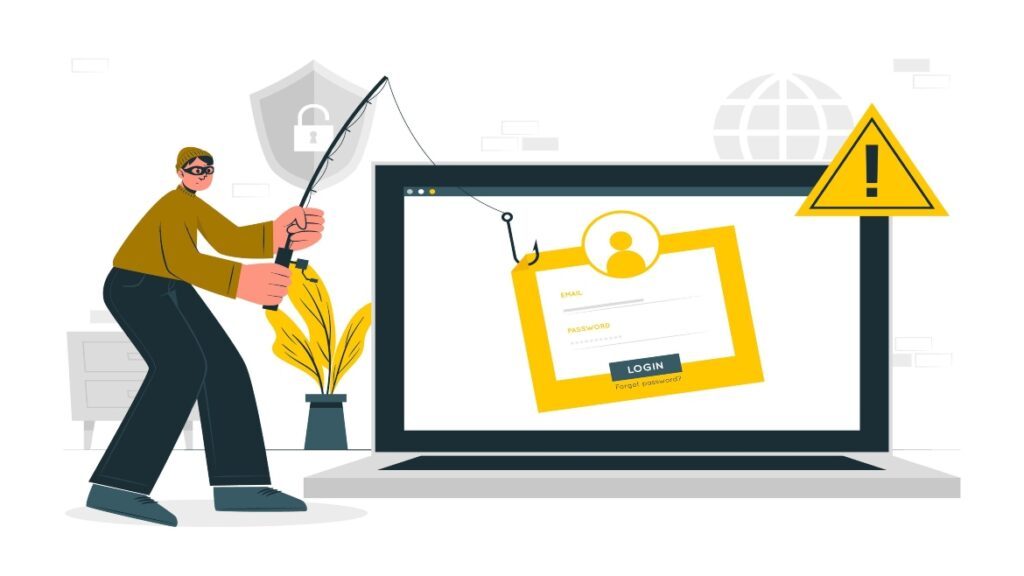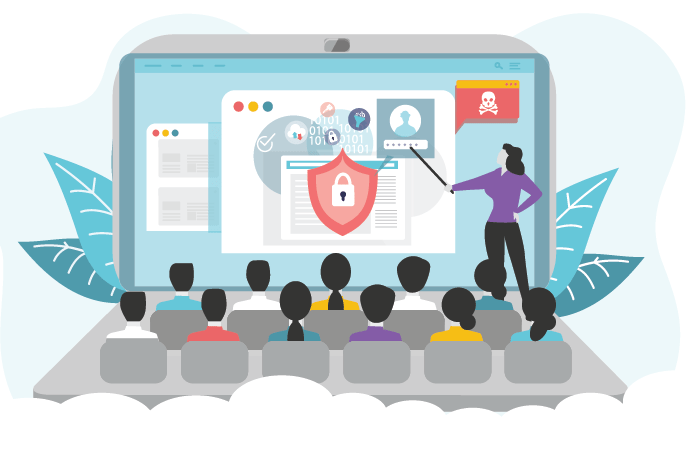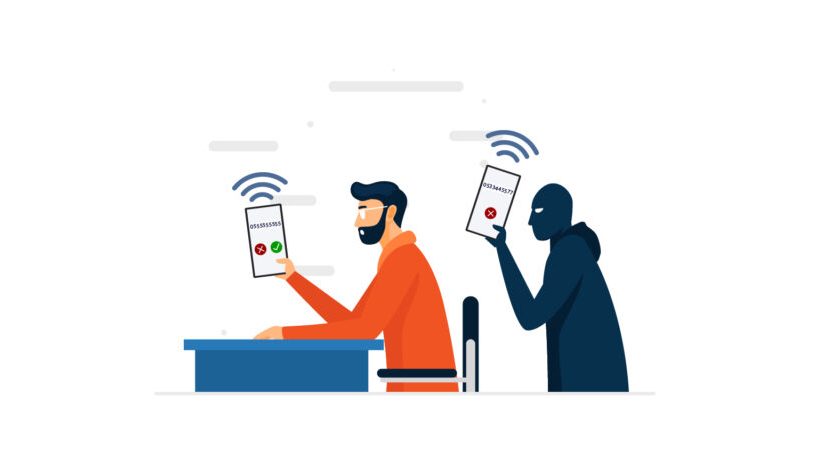eMail is no longer a medium of cyberattacks i.e. Phishing but its extended to Phonecalls or now called as Vishing. These forms of social engineering can lead to severe consequences, including data breaches, financial loss, and damage to your organization’s reputation.
To combat these threats, organizations must implement robust security awareness training programs. These programs often include phishing simulation and vishing simulation to educate employees and reduce the risk of successful attacks.
We simulate real-world attacks, with automated tools to help employees recognize and respond to threats more effectively.

Phishing simulation
Phishing simulation is a critical component of any comprehensive cybersecurity training program. It involves sending simulated phishing emails to employees to test their awareness and response to such threats. These simulations mimic real phishing attacks, allowing organizations to identify vulnerabilities and improve their security posture.
Benefits of Phishing Simulation
- Improves Awareness: Employees learn to recognize phishing emails and understand the tactics used by cybercriminals.
- Reduces Risk: By identifying and addressing vulnerabilities, organizations can reduce the likelihood of successful phishing attacks.
- Enhances Security Culture: Regular simulations help foster a security-conscious culture within the organization.
- Provides Measurable Results: Detailed reports and analytics offer insights into employee performance and areas for improvement.

Implementing Phishing Simulation in the most effective way
To implement a successful phishing simulation program, organizations should follow these steps:
Integration with Security Awareness Programs: Seamlessly incorporate phishing simulations into your broader cybersecurity training strategy
- Define Objectives: Clearly outline the goals of the simulation, such as improving awareness or testing specific scenarios.
- Select or Create Templates: Use phishing templates that mimic real-world attacks, or customize templates or scenarios tailored to your organization.
- Launch Campaigns: Send simulated phishing emails to employees and monitor their responses.
- Analyze Results: Review the results to identify vulnerabilities and measure the effectiveness of the training.
- Empower: Review employees who have successfully identified attacks with reporting button.
- Provide Feedback and Training: Offer targeted training to employees who fell for the simulations and reinforce best practices for all with Granular Reporting
Ready to enhance your organization’s security? Request a demo today!
Security Awareness Training Programs
A robust security awareness training program goes beyond phishing simulation. It encompasses a range of training modules designed to educate employees about various cyber threats, including ransomware, social engineering, and Business Email Compromise (BEC). Our security awareness training not only improves your organization’s cybersecurity posture but also helps build a proactive security culture.
Components of Security Awareness Training
- Interactive Modules: Engaging training modules covering different aspects of cybersecurity through, videos, articles, posters, creatives etc..
- Simulated Attacks: Regular simulations of phishing, vishing, sms, BEC, Spear, ransomware and other social engineering attacks.
- Role-Based Training: Customized training for different roles within the organization to address specific risks.
- Gamification: Using elements of games to make learning more engaging and fun.
- Continuous Learning: Ongoing training and assessments to keep employees up-to-date by phishing tests and simulated attacks to reinforce learning.
- Compliance Training: Ensuring employees understand and comply with relevant cybersecurity regulations and standards.


SCORM Compliance
Sharable Content Object Reference Model is a set of technical standards for eLearning software products. SCORM governs how learning content and Learning Management Systems (LMS) communicate with each other to ensure compatibility and integration.
Implementing SCORM based content in Security Awareness Training
To integrate SCORM-compliant content into your security awareness training:
- Develop SCORM-Compliant Content: We create training modules that adhere to SCORM standards, ensuring compatibility with various LMS platforms.
- Customised for LMS: Add most customised Content for your LMS to host your training content.
- Track Progress and Performance: Utilize the reporting features of LMS to monitor employees’ progress, completion rates, and assessment results through SCROM
- Update Content Regularly: Keep your training content up-to-date with the latest content customised for your organization related to security threats and best practices, ensuring continuous learning and improvement.
Vishing Simulation
Vishing (voice phishing) is a form of social engineering where attackers use phone calls to trick employees into revealing sensitive information. Implementing a vishing simulation program can help organizations assess and improve their defenses against these attacks.
Benefits of Vishing Simulation :
- Realistic Training: Simulates real-world vishing scenarios to train employees effectively.
- Identifies Vulnerabilities: Helps identify which employees are most susceptible to vishing attacks.
- Enhances Response: Improves employees’ ability to recognize and respond to vishing attempts.
- Strengthens Security Culture: Reinforces the importance of vigilance and security awareness in daily operations.

How we conducts Vishing Simulation :
- Select Scenarios: Choose or create vishing scenarios that reflect potential threats.
- Simulate Calls: Conduct simulated vishing calls to targeted employees.
- Monitor Responses: Record and analyze how employees respond to the simulated calls.
- Provide Training: Offer feedback and additional training to improve employee responses.
Advanced Phishing Techniques :
Cybercriminals continually evolve their tactics, making it essential for organizations to stay ahead of the curve. Understanding and preparing for advanced phishing techniques, such as spear phishing, smishing, and Business Email Compromise (BEC), is crucial.
- Spear Phishing: targets specific individuals within an organization, often using personalized information to make the attack more convincing. We plan this campaign to train employees to recognize these targeted attacks is critical for protecting sensitive information.
- Smishing: involves sending fraudulent text messages to trick recipients into revealing personal information or clicking on malicious links. We integrate smishing awareness into your security awareness training can help mitigate risk by SMS based cyberattacks.
- Business Email Compromise (BEC): involves attackers impersonating high-level executives or business partners to trick employees into transferring money or sensitive information. We help train employees to verify such requests through multiple channels can prevent these costly attacks.
- Building a Security-Conscious Culture: AmbiSure helps in creating a culture of security within your organization which is vital for long-term success. Regular security awareness training, combined with phishing and vishing simulations, can help build this culture. Encourage employees to report suspicious activities and reward proactive behaviour to reinforce the importance of security.
- Measuring and Improving Security Posture: To continuously improve your organization’s security posture, it’s essential to measure the effectiveness of your phishing and vishing simulation programs. Use detailed reports and analytics to track progress, identify areas for improvement, and adjust your training strategies accordingly.
QUERY
frequently asked questions
Phishing simulation involves sending simulated phishing emails to employees to test their awareness and response to phishing attacks.
Security awareness training educates employees about various cyber threats, reducing the risk of successful attacks and enhancing the organization's security posture.
Vishing (voice phishing) is a form of social engineering where attackers use phone calls to trick employees into revealing sensitive information.
To implement a phishing simulation program, define objectives, select or create templates, launch campaigns, analyze results, and provide feedback and training.
Phishing involves sending fraudulent emails to a broad audience, while spear phishing targets specific individuals with personalized information.
Vishing simulation helps identify vulnerabilities, improve employee responses, and strengthen the organization's security culture.





















